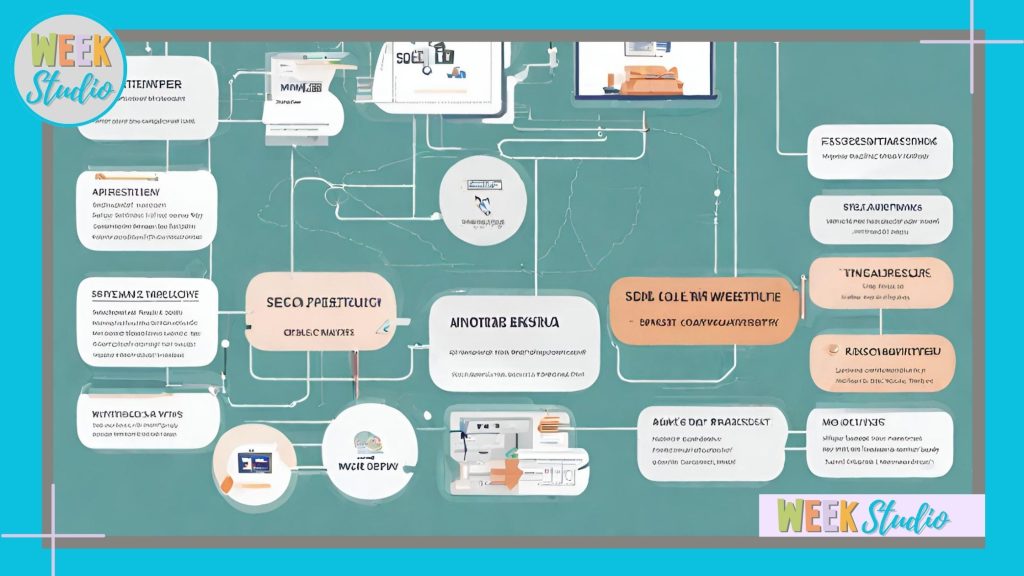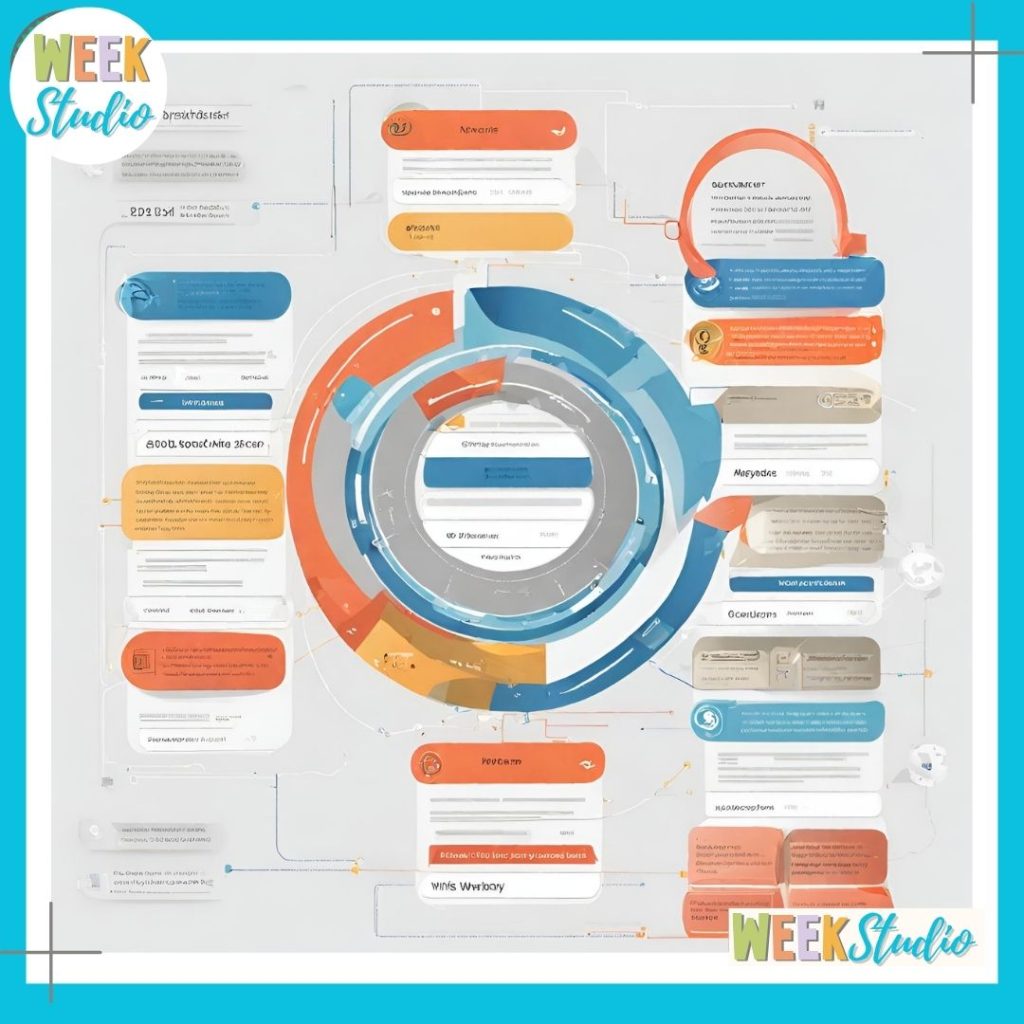In the vast realm of the internet, where countless websites vie for attention, the significance of a well-structured website architecture cannot be overstated. Imagine your website as a virtual storefront – if it’s cluttered, disorganized, or difficult to navigate, potential visitors are likely to turn away before discovering what you have to offer. This analogy holds true in the digital space, where user experience and search engine optimization (SEO) go hand in hand.
Creating a website that not only appeals to human visitors but also aligns seamlessly with the algorithms of search engines is an art and a science. Search engines, like Google, employ sophisticated algorithms that assess the structure of websites to deliver relevant and valuable results to users. The more user-friendly and well-organized your website is, the higher it is likely to rank in search engine results, leading to increased visibility and traffic.
In this article, we’ll delve into the intricacies of structuring your website for optimal SEO performance. From the role of header tags and the importance of logical URL structures to the impact of mobile responsiveness and site speed, we’ll explore the key components that contribute to a website’s success in the digital landscape.
So, buckle up as we navigate through the digital labyrinth, unraveling the mysteries of website architecture and discovering how you can elevate your site’s visibility, user experience, let’s embark on the journey of creating a website structure that not only captures attention but also stands the test of SEO scrutiny.
What is A SEO-Friendly Website Architecture

In the ever-evolving world of online presence, crafting a website that not only appeals to human visitors but also aligns seamlessly with the algorithms of search engines is the cornerstone of success. The concept of SEO-friendly website architecture goes beyond mere aesthetics; it encompasses a strategic approach to organizing and presenting your content.
The Basics of SEO-Friendly Website Architecture
At its core, SEO-friendly website architecture is about creating a digital space that search engines can easily crawl and understand. When search engines navigate your site effortlessly, it positively impacts how your content is indexed and, consequently, how it appears in search results. Simultaneously, a well-structured website enhances the user experience, making it more likely for visitors to engage with your content.
Consider your website as a virtual library; each book (webpage) should have a designated place on the shelf (URL), a clear title (H1 tag), and a logical arrangement (navigation). Achieving this harmony requires a comprehensive understanding of the key components that contribute to an SEO-friendly website.
Importance of User Experience and Crawlability
Before delving into the technical aspects, it’s crucial to emphasize the symbiotic relationship between user experience and crawlability. While search engines analyze the technical structure of your website, they also assess how users interact with it. A website that is easy to navigate, with content logically organized and accessible, tends to have a lower bounce rate and higher user engagement – metrics that search engines consider when determining rankings.
In essence, an SEO-friendly website is one that caters to both the algorithms and the human audience. Now, let’s dissect the key components that constitute an effective website architecture, starting with the fundamental building blocks of header tags.
What Are The Structural Components Of A Webpage?

Creating a website that harmonizes with both user expectations and search engine algorithms involves understanding and implementing key components that form the backbone of effective website structure. Let’s explore these components, each playing a pivotal role in optimizing your site for SEO success.
Header Tags and Their SEO Impact
It holds significant weight in the eyes of search engines, conveying the primary topic or theme of the page. Crafting a clear and concise H1 tag that incorporates relevant keywords can positively influence your search engine rankings.
Header tags from H2 to H6 are used to structure subtopics within your content. Like chapters in a book, these tags provide hierarchy and context, helping both search engines and users understand the thematic flow of your content. Utilizing keywords naturally within these subheadings further enhances your SEO efforts.
Importance of Logical URL Structure
A website’s URL structure is akin to a roadmap for search engines and visitors alike. A logical and easily understandable URL not only improves the user experience but also aids search engines in comprehending the content’s context.
The Role of Navigation Menus in SEO
Navigation menus are the signposts that guide users through your website. A well-organized menu enhances user experience and helps search engines comprehend the hierarchy of your content. Consistent and intuitive navigation menus contribute to lower bounce rates and increased page views, both valuable metrics for SEO.
Organizing Content with Proper Heading Hierarchy
The way you organize content within a page is as crucial as the overall site structure. Using a clear heading hierarchy (H1, H2, H3, etc.) not only breaks down your content into digestible sections for readers but also signals to search engines the importance and relationship of each section. This organization aids in better content indexing and retrieval.
As we move forward, we’ll delve deeper into each of these components, uncovering best practices and practical tips to empower you in structuring your website for maximum SEO impact. So, let’s roll up our sleeves and explore the nuances of optimizing header tags for improved search engine visibility.
What Is The Best Way To Structure A Website For SEO?
There is no one-size-fits-all answer to this question, as the best way to structure a website for SEO will vary depending on the specific website and its target audience. However, there are a few general tips that can help to improve a website’s SEO.

One of the most important things to consider is the website’s structure. The structure of a website refers to the way the pages are organized and linked together. A well-structured website will make it easier for search engines to crawl and index the pages, which can help to improve the website’s ranking in search results.
What Are The 3 Types Of Web Architecture?
When it comes to web architecture, there are three types: client-server, three-tier, and n-tier. Client-server is the oldest type of web architecture and is still used today. This type of architecture is a two-part system with a client and a server. The client is a program that resides on the user’s computer and requests information from the server. The server is a program that resides on a separate computer and hosts the information that the client requests.
Three-tier architecture is a newer type of web architecture that is becoming more popular. This type of architecture is also a two-part system, but it has an additional layer between the client and the server. N-tier architecture is the newest type of web architecture and is the most popular type. This type of architecture is a three-part system, and it has an additional layer between the client and the server. The third layer is the middleware, which is a program that resides on a separate computer and manages the communication between the client and the server.
The main difference between the two types of architectures is that three-tier architecture separates the business logic from the presentation layer, while n-tier architecture separates the business logic from the data. This makes three-tier architecture more modular, and it makes it easier to change the presentation layer without affecting the business logic. It also makes it easier to change the data layer without affecting the presentation layer.
Three-tier architecture is more popular than n-tier architecture because it is easier to use and it is more reliable. The middleware layer in three-tier architecture acts as a buffer between the client and the server, which prevents the server from becoming overloaded. The middleware layer also acts as a filter, which prevents the client from receiving information that it is not authorized to see. N-tier architecture is more popular than three-tier architecture because it can handle more traffic, and it can be scaled up more easily.
How Do You Organize A Website Structure?

When it comes to website design, there are a few popular ways to organize the content. One way is to use a top-down hierarchy, with the home page as the topmost level. This is generally used for smaller websites. Larger websites often use a more complex structure, with multiple levels and subsections. There are a few things to consider when organizing a website:
- The content of the website
- The target audience
- The purpose of the website
Once you have a good understanding of these factors, you can start to create a structure that will work best for your website. The home page is the most important page on a website. It is the first page that users see, and it is the main entry point into the website. The home page should be designed to attract users and encourage them to explore the website.
The main sections of a website should be clearly visible on the home page. These sections can be organized into a menu bar or a navigation bar. The home page should also include a search box to help users find what they are looking for on the website. The layout of the home page should be easy to understand and use. The fonts and colors should be easy to read, and the buttons and links should be easy to click. The home page should also be visually appealing, so users will want to stay on the website.
What Is A Flat Url Structure For SEO?
A flat url structure is a website design in which the webpages are organized in to a simple hierarchy with no folders or sub-directories. This is in contrast to a deep url structure, which uses folders and sub-directories to organize the website content. There are a number of reasons why you might want to use a flat url structure for your website. One of the primary benefits is that it can make your website easier to navigate and search. Google and other search engines can crawl your website more easily and index your content more completely when your urls are simple and straightforward.
Another advantage of a flat url structure is that it can make your website more user-friendly. When your urls are easy to understand, your visitors can more easily find the information they are looking for. A flat url structure can also be helpful for SEO purposes. When your urls are easy to understand, they are also easier to optimize for search engines. This can help you to get better search engine rankings, which can increase traffic to your website.
What Is An Example Of Website Structure?
To grasp the concept of website structure, let’s envision a hypothetical website and dissect its components. This example will provide a tangible understanding of how different elements work together to create a cohesive and SEO-friendly architecture.

Website: A Lifestyle Blog
- Homepage (URL: www.lifestyleblog.com)
- The main entry point, featuring a dynamic layout with recent posts, popular categories, and an inviting call-to-action.
- Categories (URLs: www.lifestyleblog.com/travel, www.lifestyleblog.com/food, www.lifestyleblog.com/fashion)
- Each category represents a distinct section of the blog, catering to diverse interests. The URLs are clean, reflecting the content within.
- Individual Posts (URL: www.lifestyleblog.com/travel/best-beaches-in-2023)
- Deep-dive into specific topics within a category. The URL structure is logical, indicating the hierarchy of content.
- Header Tags on a Travel Post:
- H1: The Ultimate Guide to the Best Beaches in 2023
- H2: Exploring Tropical Paradises
- H3: Caribbean Bliss
- H3: Southeast Asian Gems
- H2: Tips for a Sun-soaked Getaway
- H3: Packing Essentials
- H3: Choosing the Right Accommodation
- Navigation Menu:
- A clean and intuitive menu featuring categories (Travel, Food, Fashion) and essential pages (About Us, Contact). Ensures easy navigation for visitors and efficient crawling for search engines.
- Internal Linking:
- Within a travel post, there are internal links to related content, such as “Top Food Spots Near the Beaches” in the Food category. This promotes user engagement and distributes SEO value.
- Sitemap:
- A comprehensive XML sitemap is submitted to search engines, outlining the structure of the entire website. This aids search engines in efficiently crawling and indexing all pages.
- Mobile Responsiveness:
- The website adjusts seamlessly to various devices, providing an optimal viewing experience on both desktop and mobile. This adherence to mobile responsiveness aligns with Google’s preferences.
- Site Speed:
- Optimized images, compressed files, and a content delivery network (CDN) contribute to swift loading times. This enhances user experience and positively influences SEO rankings.
In this example, the lifestyle blog’s structure is designed with both users and search engines in mind. The logical hierarchy of header tags, intuitive navigation, and strategic internal linking contribute to an SEO-friendly architecture, enhancing the overall performance of the website in the digital landscape. As we proceed, we’ll delve deeper into each element, offering insights and practical tips to guide you in structuring your website for SEO success.
Conclusion

In the dynamic landscape of the digital world, understanding and implementing a well-structured website architecture is the linchpin for success. As we journeyed through the intricacies of SEO-friendly web design, we uncovered the importance of header tags, logical URL structures, navigation menus, and various other components that collectively contribute to a website’s efficacy in both user experience and search engine optimization.
Web architecture, much like the blueprint of a building, provides the framework for a website’s functionality and aesthetics. A thoughtfully structured site not only enhances user satisfaction but also aligns seamlessly with the algorithms of search engines, amplifying visibility in the competitive online sphere.
Armed with the knowledge of these key components, you’re now equipped to transform your website into a powerhouse of SEO performance. Remember, it’s not just about meeting the algorithms’ expectations; it’s about providing a seamless, engaging experience for your audience. As you fine-tune your website’s architecture, you’re not just optimizing for search engines – you’re enhancing the overall online journey for your visitors.
As you embark on the journey of refining your website’s architecture, remember that the true measure of success is the seamless marriage of user satisfaction and search engine visibility. By maintaining this delicate equilibrium, your website becomes not just a virtual space but a dynamic, inviting destination in the vast digital expanse. Here’s to your website’s success in the ever-evolving world of SEO!
